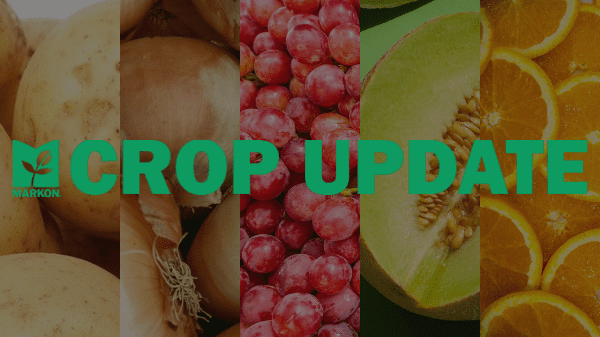Potatoes and onions are diverse crops grown in many areas of the country, and even with stronger retail demand, growers and marketers of neither could have anticipated the economic uncertainty that’s come with the COVID-19 pandemic.
Joey Piedimonte, potato and onion buyer for Markon Cooperative, BB #:123315 Salinas, CA, said he’s seeing less retail demand for potatoes, but prices may be higher for sizes 40-70s since growers sold more than normal in the panic buying after lockdown orders started.
But he said smaller sizes and No.2s should be abundant until the new crop starts appearing in the summer. He also said Washington seems to have more potatoes in storage than Idaho, which could relieve some market pressure.
On onions, Mark Shaw, vice president of operations for Markon, said the market is depressed, especially for Northwest storage onions, which are ending quickly.
But new crop onions are now available from California’s Imperial Valley, and New Mexico’s new crop should start this week. New crop onions should see higher prices until heavy summer volume appears.
Blue Book has partnered with Markon to provide crop analysis from Markon’s Fresh Crop Report.
Here are some highlights from other crops:
Melons: The California desert crop is just starting, and Shaw said volume should ramp up quickly. The offshore season is ending on time, so there should be no overlap in supplies. He said both cantaloupes and honeydew were planted before any pandemic information was known, so there could be over-supply if foodservice demand remains low this summer.
Grapes: South American supplies will dwindle in May, Shaw said, while Mexican supplies should arrive in in late May. The market seems stable on both pricing and volume.
Limes: Prices are dropping on Mexican crossings through Texas, as volume is higher than demand without many restaurants being open. Quality has been very good, he said, but there are higher quantities of smaller sizes.
Oranges: Prices are a little higher as the California Navel season winds down and the Valencia season gets going. Shaw said smaller sizes are good for school systems, as that’s what tends to ship early in the Valencia seasons, but with schools out, that product will have to find other channels. As the season progresses, sizing should increase.
Cauliflower: Like lettuce varieties, cauliflower is available from multiple California growing regions, which means supplies are abundant and prices are low. These were planted before any knowledge about the pandemic, so there is more product that demand. Weather has been good, so quality is very strong, Shaw said.



